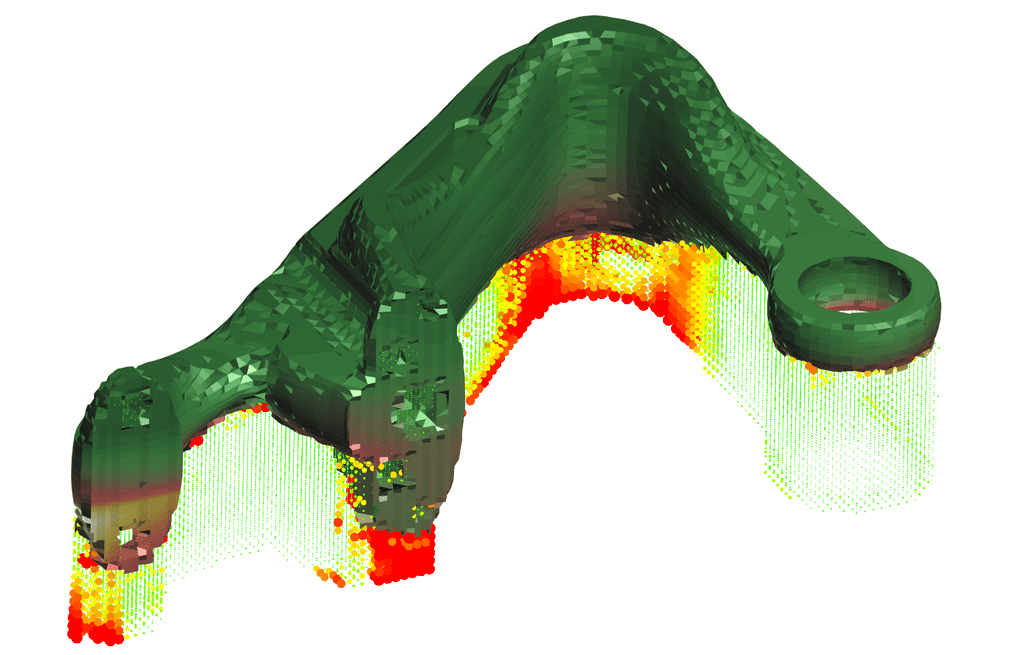The AM Chronicle team had an interesting discussion with Nils Keller and Chandan Mishra from Additive Works GmbH and Lodestar Innovations Pvt. Limited respectively on the optimum usage of Simulation to achieve a “first time right” process with Metal Additive Manufacturing.
AM Chronicle (AMC): Can you detail the current requirements and challenges of Metal Powder Bed Fusion.
Nils Keller & Chandan Mishra (NK & CM): The metal powder bed fusion process is a joining or better, a (micro) welding process. Thus, effects that occur during or after the process are similar to what is known from welding: Due to the fast cool-down rate of the molten material, plastic (irreversible) deformation is induced in the material leading to welding distortion, cracking and high residual stresses. In many cases, the process aborts before the part was finished or the final shape is too distorted what prevents the printed part to be used in applications. One reason for running into those troubles is that job preparation software uses geometry-based functions to generate the build job but does not consider the process physics. As the mechanical behavior of each geometry is different, the job preparation must be developed each time a new geometry is planned to be printed. If a job preparation is suitable needs to be tested by trying to print the part and measure the result. If problems occur, the job preparation will be adjusted, and the part is printed again and again until the desired tolerances were reached.
Thus, the three following points can be concluded as the major challenges preventing metal powder bed fusion from a broad usage:
1) Missing experience of engineers or technicians how to prepare reliable build jobs
2) High costs due to the experimental trial-and-error approach to define build jobs
3) Lack in automation and high personnel costs due to the extensive job preparation task
AMC: Metal Powder Bed Fusion involves a relatively high capital cost and also creating design iterations due to failures is expensive due to high cost of materials. What software solutions are available for the industry to decrease lead-time and failure thereby reducing costs.
NK & CM: The most important thing to decrease costs by increasing lead times is to (fully) avoid crashing build jobs aswell has having inaccurate (distorted) shapes in the end. This means, that the job preparation should be done very carefully and incorporate the process physics of the manufacturing process itself. By using process simulation, two levels of better job preparation workflows can be achieved:
1) The first step is to replace the actual build job by a process simulation. There are several commercial software packages available that give users the possibility to predict potential failures during the print as well as deformation after the manufacturing processes, and optional further post-processes like cutting or heat-treatment. These simulation results can then be used to manually adapt the job preparation. For instance, the design, build orientation or support structure can be adjusted and tested again in the simulation. In this workflow we save the machine time and powder for failed prints but are dealing with even more manual efforts and additional software for the job preparation.
2) The second level is the “simulation-based job preparation”. Here, the process simulation is not used to proof a (probably bad) job, that was created in another software, but to run the job preparation based on the simulation result. Then, the mechanical behavior of the part can be already considered during the step of determining a build orientation or creating a suitable support structure. Furthermore, additional job preparation steps can be added like a compensation of deformation to reduce shape deviations to minimum.Amphyon is the only commercial software targeting this simulation-based job preparation and already including simulation-based tools for the most important job preparation steps like orientation, supports and distortion compensation.
AMC: Is “First time right” manufacturing possible with Metal Powder Bed Fusion? If so, how do we achieve this?
NK & CM: A first time right manufacturing can already be realized today, e.g. by testing all prepared build jobs with simulation before they are printed. Of course, this requires a calibration of different inputs before and still needs a lot of experience and manual software work. However, the simulation-based job preparation will disrupt this workflow and replace it by tasks, that need similar calibrations and inputs but it will be able to directly generate the ideal job preparation across all part geometries, machines, and materials. In this case, not only the print job but the job preparation itself would be first time right as well.
AMC: How can simulation help fastrack the manufacturing process and ensure faster product development, manufacturing, and turnaround?
NK & CM: With the approach of a simulation-based job preparation, not only a first time right manufacturing can be achieved but also the job preparation can be fully automated. Once these tools were calibrated, there is no more manual interaction with software needed and autonomous metal AM factories can realized. As the machine operator then doesn’t need any knowledge about the physics of the process and the difficulties of job preparation, the three challenges mentioned before can all be solved. Manufacturing and personnel costs will be decreased significantly, and lead times will be reduced to a minimum making AM use cases more profitable. This will pave the way for a broad application of the metal powder bed fusion process in future.


